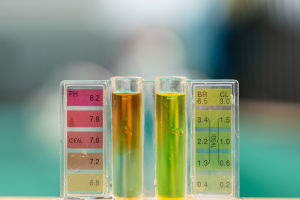Lykkers, sweat is a natural part of how the body functions. It’s the built-in cooling system that helps regulate internal temperature, especially during warm days or physical activity.
However, for some, it becomes more than just a simple response to heat — it turns into a daily challenge. This condition, known as excessive sweating or hyperhidrosis, can deeply affect comfort, confidence, and daily life. Let’s explore what it is, why it happens, and what can be done about it.
What Sweat Is and Why It Happens?
Sweat glands and their roles
Sweat is released through specialized glands in the skin, known as eccrine and apocrine glands.
- Eccrine glands are distributed all over the body, especially in areas like the underarms, face, palms, and soles. These glands primarily release water and salts to help regulate temperature.
- Apocrine glands are located in specific regions such as the underarms and groin. They release a thicker fluid rich in natural oils and other substances. When this fluid meets bacteria on the skin, it can cause unpleasant odors.
The nervous system connection
Sweat production is not just triggered by heat or movement. Emotional triggers like anxiety or tension can also cause the palms or forehead to perspire. This is controlled by the sympathetic nervous system, which can overreact in some individuals.
Understanding Hyperhidrosis
When sweat becomes too much
Hyperhidrosis occurs when sweat production goes beyond what is necessary for temperature control. It can appear in two forms:
- Primary hyperhidrosis has no clear underlying reason. It’s often localized — affecting areas such as hands, feet, or underarms.
- Secondary hyperhidrosis is linked to certain health conditions or changes in hormone levels. It may also occur due to some medications.
Localized or widespread
This condition can affect the whole body or be restricted to one area. When widespread, it may be connected to conditions like an overactive thyroid. Localized sweating, especially of the hands or feet, is often tied to heightened emotional response.
Quality of Life and Daily Challenges
Practical discomfort
Those living with hyperhidrosis often need to change clothes more than once a day or wash frequently to manage discomfort. It may also lead to avoiding physical contact, like handshakes, out of self-consciousness.
Impact on professional life
In jobs that require manual precision, excessive sweating can make tasks more difficult. Moisture can interfere with tools, papers, and even electronics.
Skin irritation risks
In areas where air circulation is limited, such as feet, continuous dampness can lead to irritation or breakdown of the skin barrier. This may lead to redness, peeling, or sensitivity.
Available Treatments
Topical options
Mild to moderate sweating is often managed with aluminum-based antiperspirants. These products work by forming a temporary barrier over the sweat glands. However, they should be used carefully to avoid irritation and are most effective in the underarm area.
Iontophoresis
For sweating of the hands and feet, a technique known as iontophoresis may be recommended. It involves submerging the affected area in a mild solution while a low electric current passes through it. This blocks the gland ducts temporarily.
Botulinum protein treatment
A specialized approach for underarms, palms, feet, and face involves injections that temporarily block the signals from nerves that stimulate sweat glands. This treatment usually lasts several months.
Surgical intervention
When other treatments do not provide lasting relief, a procedure to interrupt the signals that trigger sweating may be considered. This option should be thoroughly discussed with a healthcare provider, as it is more invasive and not suitable for everyone.
Expert Insight
Temporary versus permanent solutions
Dr. Tina S. Alster, Clinical Professor of Dermatology at Georgetown University Medical Center and founding director of the Washington Institute of Dermatologic Laser Surgery, explains that topical and injectable protein-based treatments can deliver meaningful improvement for many individuals. However, those seeking longer-lasting or more structural skin enhancement should consider procedural interventions—such as laser resurfacing, microneedling, or other energy-based therapies—performed under professional medical guidance
Seeking professional guidance
Because hyperhidrosis can sometimes signal deeper issues, it’s essential to consult a healthcare provider before beginning any treatment. An accurate diagnosis ensures that the approach matches the individual’s condition and lifestyle needs.
In Conclusion
Taking control of excessive sweating starts with understanding the root of the problem and exploring the right solutions. For Lykkers who face this daily struggle, know that practical and effective options exist.
From simple topical products to more advanced procedures, managing excessive sweating is entirely possible with expert support and the right strategy. No one needs to feel limited by this condition — it can be addressed, controlled, and improved.


